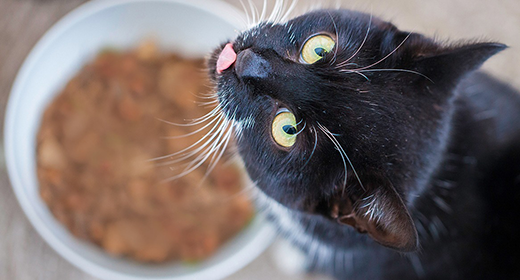

Ethoxyquin is a synthetic antioxidant (artificially manufactured from other elements) that is approved for various uses. It is approved and regulated by the Food and Drug Administration (FDA) and the Association of American Feed Control Officials (AAFCO) for use as a preservative in animal feeds. Pet food manufacturers have been using ethoxyquin to prevent rancidity and maintain the nutritional quality of their products for more than 35 years.
Ethoxyquin remains stable at the high temperatures required to process pet foods during extrusion. It is important in protecting fats and oils from degrading, losing available calories, and becoming rancid.
Despite the fact that all studies conducted to date prove that ethoxyquin is safe for use in all animal foods when used at approved levels, rumors continue to circulate to the contrary.
Individuals who seek to discredit the use of ethoxyquin will often cite certain studies that showed toxic effects in animals fed ethoxyquin. What these individuals fail to point out is that the animals in these studies were given excessive amounts of ethoxyquin—20 to more than 50 times the maximum limit—before negative effects were exhibited.


Do you know what’s in your cat’s food? And more importantly, do you know how those nutrients affect your cat’s health, including their muscles, skin, coat and nails, digestion, bone growth and so much more?
As the old adage goes, “You are what you eat,” so it stands to reason that by feeding your cat high-quality ingredients, their overall health will be positively impacted.
So, what’s in your cat’s food? Simply put, cat food nutrients are divided into four subcategories: protein, carbohydrates, fats, and vitamins and minerals. Learn more about each of these — and how they can affect your cat’s health.
Protein is best known for supplying amino acids, or protein subunits, to build hair, skin, nails, muscles, tendons, ligaments and cartilage.
Common cat food protein sources include meat, chicken, fish and some plant ingredients like corn gluten and soybean meal.
Cats and kittens are true carnivores and need essential amino acids. One of these, taurine, is not found in plant protein sources such as soybean meal — which means your cat needs a protein source from meat to stay healthy.
Carbohydrates (also known as starches [sugars]) and fibers provide energy and bulk, respectively. Plants and grains like wheat and corn are common carbohydrate sources.
Starches are made up of various types of sugar, such as glucose or fructose. Through digestion, cats can easily convert sugar into usable energy.
Fiber provides bulk to move food through your cat’s gastrointestinal tract, aiding in healthy digestion. Some types of fiber, such as vegetable gums and beet pulp, are fermented by bacteria in your cat’s intestines, creating short-chain fatty acids that serve as an important source of energy for the cells lining your cat’s intestinal tract.
Though it sometimes gets a bad rap, fat fulfills many vital bodily functions. Fat helps your cat maintain their body temperature, control inflammation and more. It is the primary form of stored energy in the body, providing twice as much energy as carbohydrates or proteins.
Fats are found in meats, fish and plant oils, such as flax and vegetable oils.
Fats also provide omega-6 and omega-3 fatty acids, which are important fat subunits. Omega-6 fatty acids are essential for skin and coat maintenance and proper membrane structure. Omega-3 fatty acids have also been shown to affect coat quality and skin health.
Nutrition tip: All IAMS™ dry foods contain an optimal ratio of omega-6 and omega-3 fatty acids to help support a healthy skin and coat.
Vitamins are responsible for promoting bone growth, blood clotting, energy production and oxidant protection in your cat.
Vitamins A, D, E and K require fat for absorption into the body, while vitamins such as the B-complex vitamins and vitamin C need water to be absorbed into the body.
Minerals provide skeletal support and aid in nerve transmission and muscle contractions.
Feeding your cat a high-quality, nutritionally complete diet is crucial. When choosing a cat food, make sure to read the label and look for optimal sources of protein, carbohydrates, fat, and vitamins and minerals. These building blocks will help ensure your cat lives a long and healthy life.